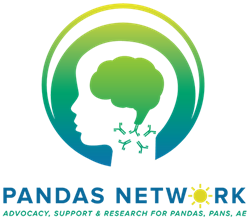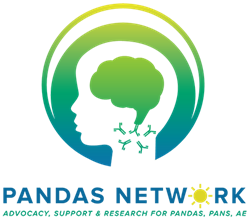
Dr. Agalliu’s innovation shows how the antibodies get into the brain, using previously undiscovered mechanisms in the olfactory system. -Diana Pohlman, Director of the PANDAS Network
WASHINGTON (PRWEB)
May 26, 2020
New research has discovered a previously unknown mechanism through which certain infections can impact the brain causing post infectious encephalitis. The work was conducted to determine if PANDAS (Pediatric Autoimmune Neuropsychiatric Disorders Associated with Streptococcal Infections) and PANS (Pediatric Acute-onset Neuropsychiatric Syndrome) could adversely attack the central nervous system and create brain inflammation as well. PANDAS and PANS cause devastating symptoms, which can include a sudden, dramatic onset of obsessive compulsive disorder, or severely restrictive food intake, together with severe anxiety, depression, tics, neurological conditions, sleep disturbances, and a host of other psychiatric behaviors.
PANDAS and PANS afflict roughly one in every 200 children in the U.S. The conditions are caused by an autoimmune reaction triggered by infections such as strep throat, walking pneumonia, viruses and Lyme disease, which result in inflammation of the child’s brain.
Research conducted by Dr. Dritan Agalliu in the Department of Neurology at Columbia University Irving Medical Center, reveals that immune cells responding to strep throat bacteria and likely other infections can travel through nasal passages up into the brain area called the olfactory bulb, where they damage the blood-brain barrier in mice. Compromising that barrier — which is meant to keep molecules out of the brain that don’t belong there — allows autoantibodies to enter and inappropriately attack healthy brain cells and damage blood vessels. That attack causes neuroinflammation and neuronal dysfunction, leading to the abrupt onset of severe neurological and/or psychiatric symptoms.
Dr. Agalliu was investigating autoimmune encephalitis (AE), a group of central nervous system disorders. Specifically, he was probing the mechanisms that cause post-infectious basal ganglia encephalitis (BGE) disorders, a subset of AE that is triggered by either bacterial, viral or fungal infections. The basal ganglia are in an area of the brain associated with regulating functions such as motor movement, cognitive and emotional response, and procedural learning.
“The loss of taste and smell in BGE patients was an unexpected clue,” said Diana Pohlman, director of the nonprofit PANDAS Network. “Dr. Agalliu’s innovation shows how the antibodies get into the brain, using previously undiscovered mechanisms in the olfactory system.”
In honor of the children and adults who have suffered from AE, the PANDAS Network sponsored the development of an animated video — “How Immune Response to Infection Triggers Basal Ganglia Encephalitis Through the Breakdown of the Blood-Brain Barrier” — to illustrate the mechanism discovered by Dr. Agalliu’s research.
“As we explain in the video, early diagnosis and treatment is imperative for this complex patient population,” added Pohlman. “We hope this video helps healthcare providers better understand the neurological processes causing the disturbing and confusing symptoms these patients often present with that are often misdiagnosed, which can include crippling OCD, tics, inability to eat and in some cases periods of intense seizure-like rage and breaks from reality.”
The free video is available for viewing online here.
This research was funded by a RO1 Grant from the National Institute of Mental Health.
About PANDAS Network
PANDAS Network is dedicated to improving the diagnosis and treatment of children with PANDAS (Pediatric Autoimmune Neuropsychiatric Disorders Associated with Streptococcal Infections) and PANS (Pediatric Acute-onset Neuropsychiatric Syndrome). Armed with an impressive network of doctors, researchers and scientists, PANDAS Network strives to collaborate with subject matter experts, build public awareness, provide family support, and gather data and resources to better inform parents and the medical community about PANDAS and PANS. To learn more or donate, visit http://www.pandasnetwork.org.
Share article on social media or email:

